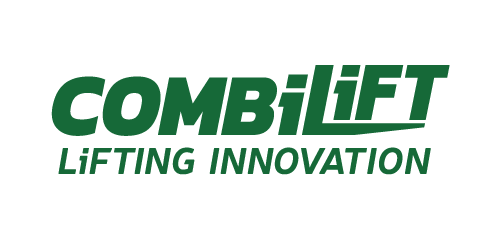Combilift’s journey has been defined by innovation, customisation, and a strong commitment to sustainability. From 1998 to today, its solutions and patented designs continue to set it apart in the material handling industry.
Since its founding in 1998, Combilift has continuously pushed the boundaries of innovation in the material handling industry. From its early days, the company has embraced a culture of thinking big and delivering products that meet the evolving needs of its customers. This forward-thinking approach has not only fuelled Combilift’s growth but also established it as a leader in sustainable forklift design and manufacturing.
Reflecting on the company’s journey, Martin McVicar, Combilift Founder and CEO, recalls some key learnings he took from his travels in the United States. “One of the things I probably took from the US was their mentality to think big. They’re not afraid to be boastful, and I feel one limitation of Irish companies is we don’t preach enough about how good our businesses are. I took away from the US the importance of setting a vision for the business and always thinking, ‘How could we grow this business to a billion-dollar company?’”
Meeting market needs
One of the key factors behind Combilift’s success is its ability to customise machines to address specific market demands. Whether it’s developing a bespoke solution for a large multinational or designing a forklift to fit the unique constraints of a local warehouse, Combilift’s dedication to solving customer challenges is unwavering.
One instance of this is in the push for greater sustainability. “We are very focused on how to make our business, our vehicles, more environmentally friendly for our customers,” McVicar says. “Then – on top of that – how do we enable our customers to make their warehouse utilisation more environmentally friendly? The answer isn’t the same for every customer. So often, innovation is a response to specific challenges presented by the customer.”
This commitment to sustainability is evident in the company’s shift toward electrification. “Over 70 per cent of the vehicles we’re currently making are electric, and I’d say about 98 per cent of our R&D has gone into electric-powered equipment,” adds McVicar.
Today, Australia stands as Combilift’s fifth-largest market – with the US, UK, Germany, and France leading the charge. McVicar attributes Combilift’s popularity in Australia to the company’s focus on customisation. “Each forklift is designed to address a specific market need and is individually customised to every order. For example, the Combilift pedestrian range resulted from an original order from Australia’s Bunnings – we custom-built the Combilift Walkie Reach for them. Many of our trucks have been inspired by Australian customers.”
One of the trucks launched to celebrate Combilift’s 25th anniversary – the Combi-CB70E – was designed in response to customer needs and feedback. This counterbalance, multi-directional forklift is designed to manage long loads while being both compact and electric. It features a patented swivel seat that enables the driver to turn left or right, reducing strain when reversing – a prime example of Combilift’s focus on ergonomic and efficient design.
Patented innovation
Since the introduction of the multi-directional C4000 in 1998, Combilift has remained at the forefront of forklift innovation. The company’s dedication to continuous improvement has led to the registration of roughly 140 patents worldwide, each one representing a significant step forward in safety, efficiency, and space utilisation.
Mark Whyte, Combilift’s Research and Development Manager, has been instrumental in many of these innovations. Reflecting on his time with the company, Whyte notes: “The company has a very good can-do attitude, from higher management right through the entire workforce. In development, we listen to our customers and our salespeople as to what’s needed in the market.”
One of Combilift’s most successful patents is the pedestrian tiller arm, introduced in 2012. This innovation allowed warehouses worldwide to narrow their aisles by repositioning the operator to the side of the truck, significantly increasing visibility and operational safety. Whyte recalls the lightbulb moment when the idea was born. “The invention on the pedestrian model’s tiller arm was like a light bulb moment around my desk one day with Robert [Moffett] and Martin. We said, ‘Imagine if you could just stand to the side of the forklift.’ And that became the focus of the product.”
This inventive spirit has driven Combilift’s growth from a small team in 1998 to a global workforce of around 800 employees today. The first C4000, based on Moffett’s three-wheeled system, disrupted the forklift industry by eliminating the need for a suspension system and introducing multi-directional functionality – a game-changing design that optimised yard and warehouse space.
Whyte remains proud of the company’s progress and its commitment to innovation. Despite the rapid technological advancements over the past two decades, he and the Combilift team are not letting up, continuing to draw inspiration from every new project. And to him, each Combilift innovation has a unique place in his heart: “I don’t think I could choose one model over another. I’ve worked on most of the forklift models here, and they’re all unique – that’s the beauty of Combilift.”





